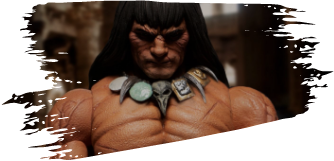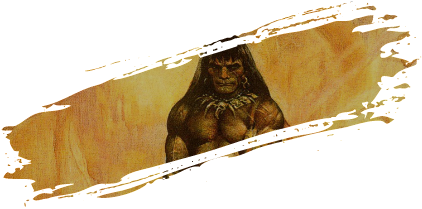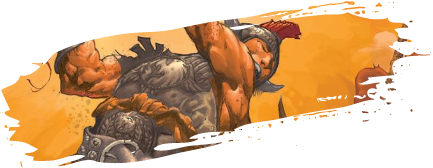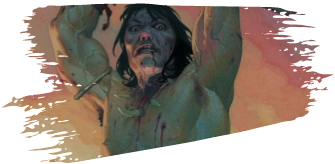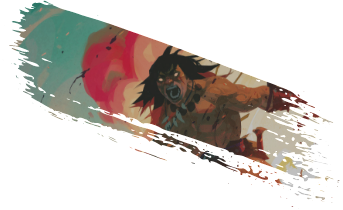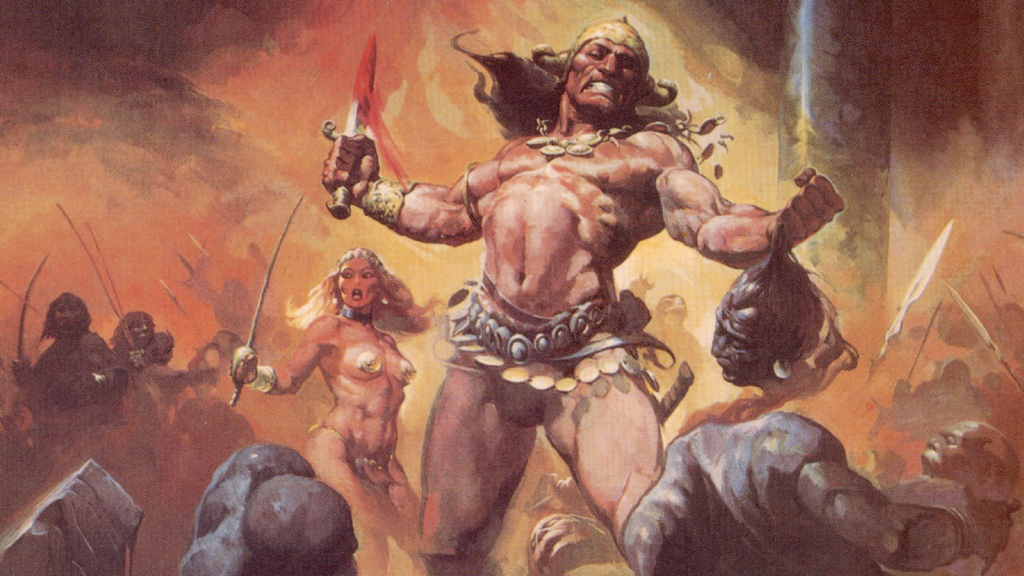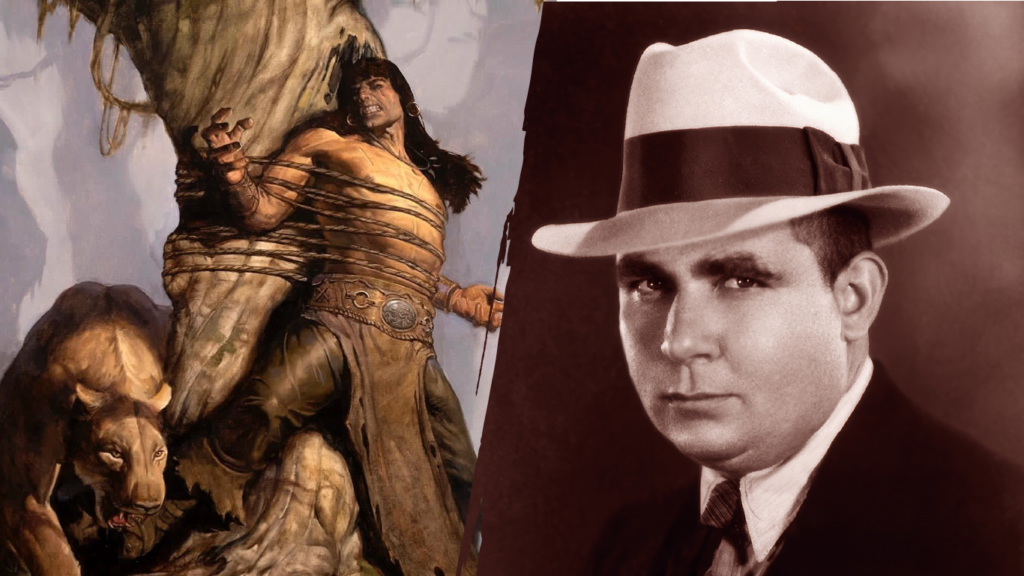
A question to round out the year: how exactly did the kingdoms of Conan’s time celebrate their new year?
It seems simple enough at first.
But when you’re dealing with an age where barbarian kings ruled from golden thrones and sorcerers kept pet demons in their towers, it’s fair to say their celebrations probably weren’t what you’d expect.
What follows is a humble attempt to reconstruct these festivities as they may have happened in eight of the countries that existed during the storeid Hyborian Age.
A warning, though – some of these celebrations might explain why certain kingdoms didn’t survive to see the modern age..
Aquilonia

In the capital city of Tarantia, seated on the mighty Khorotas River, we can imagine that golden banners were draped from palatial walls while the noble houses each sponsor public games in the city squares. The palace itself probably hosted a grand (if not excessive), with each noble house required to present tribute to the crown during the festivities, turning even celebration into a display of fealty.
Down in Poitain, knights may have competed not just in jousts but in troubadour contests, composing songs about military victories while their famous cavalry puts on displays of strength and daring. Their fierce loyalty probably shows in elaborate oath-renewal ceremonies, where each noble house publicly reaffirms their famous devotion to the crown.
The Bossonian Marches, constantly threatened by Pictish raids, likely combine celebration with practical defense. The Bossonians probably held archery contests that double as combat practice, with prizes given for the best showing among the frontier families who’ve helped hold the line between the Thunder and Black Rivers.
In Gunderland, separated by those teeming woodlands, they’re probably celebrating within massive oath-rings in their mead halls where warriors swear fellowship for the coming year, followed by displays of strength. Their “wild” reputation probably comes out in hunting competitions in those wildlife-rich forests.
And in pastoral Tauran, with its thatched cottages and open groves, they likely celebrate in hunting lodges, with woodsmen competing to bring in the best game for the feast while locally-brewed mead flows freely. The people of the open pastures probably incorporate their hunting traditions into the festivities, with displays of falconry and tracking skills.
Argos
In Messantia, where the Khorotas River meets the Western Sea, the new year probably explodes into life with the rising of the winter star. The harbor would transform as ships string lanterns from bow to stern, creating rivers of light that mirror the stars above. Captains likely compete to create the most elaborate displays, with colored glass lanterns arranged in patterns that tell tales of their greatest voyages – or at least, the voyages they’re willing to talk about publicly.
The docks themselves probably become a maze of temporary markets. Picture stalls selling incense from the southern kingdoms, spices that change the color of fire, and those distinctive blue-glazed luck tokens that Messantian sailors swear protect their ships. The air would be thick with the smoke of cooking fires as vendors prepare traditional sailor’s stew – that famous dish where every port family insists their recipe is the original and everyone else’s is a pale imitation.
In the wealthy merchant quarters, trading families probably host elaborate feasts aboard their largest vessels. Imagine tables groaning with specific dishes that mark successful trading routes: pickled fish prepared in the style of seven different ports, bread baked with grain from each of their major trading partners, wines that definitely came through proper customs channels. Each family likely tries to outdo the others with increasingly elaborate origin stories for their “traditional” family recipes.
The real spectacle would be the midnight boat parade. Picture hundreds of vessels, from fishing boats to merchant galleys, each decorated according to their crew’s heritage. The oldest Argossian families probably deck their ships with shells painted in a distinctive deep blue that’s so hard to source, while newer trading families mix in their own touches – gold-threaded sails, carved figureheads painted with symbols from every port they’ve visited.
And in cramped back alleys near the docks, the celebrations likely take on a different flavor. Taverns probably run betting pools on which ship will win the unofficial “most impressive entrance” contest, with separate categories for “most obviously stolen decorations” and “most creative explanation for suspicious cargo.” Some establishments have probably gotten rich running year-round savings clubs where sailors deposit a portion of each voyage’s earnings (legitimate or otherwise) to ensure they can afford the traditional new year’s festivities.
The morning after probably brings its own traditions – the harbor watch turning a blind eye to how many ships seem to have mysteriously swapped decorations overnight, and every captain solemnly performing those “traditional” hangover cures that somehow all involve throwing something into the harbor while facing different directions.
Cimmeria

Winter solstice marks new year’s birth in Cimmeria – if anyone can spot the sun through eternal clouds. The year’s darkest day sees bonfires bloom across fog-shrouded hills. Four tribes gather to greet the sun’s rebirth in their own ways.
The Dal Cais probably time their celebrations to the exact moment of solstice. Their druids might trace ancient Atlantean star-charts in mountain snow, while warriors hurl tree trunks in contests of strength. The time between sunset and sunrise belongs to tales of heroes long dead, their deeds echoing off icy peaks.
In Ciannechta halls, silver gleams against firelight. Master craftsmen likely forge solar discs and spiral torcs as the year turns, each piece hammered with prayers for the sun’s return. The metalwork captures starlight, throwing strange shadows across warrior bands testing their strength against winter’s grip.
Northeast winds carry the Fianna’s songs through darkness. Their skalds probably weave tales of how their ancestors stole fire from the gods when the first long night fell. Sacred groves fill with thundering voices. The strongest warriors might earn the right to light the solstice fires, carrying flames from hall to hall until dawn breaks.
The Erianne’s southern clans blend old ways with new. Their druids probably chart the sun’s journey with stolen Aquilonian instruments while warriors dance ancient steps beneath strange stars. Some say they time their raids to the solstice, when southern kingdoms feast and grow careless.
Stone cairns rise by starlight. Each clan adds its markers, names of ancestors carried on frost-laden breath. The stones remember what men forget. Old feuds settle in wrestling rings drawn in snow. New alliances form in firelit halls. The sun’s rebirth demands witness, even in this land of eternal twilight.
Dawn breaks. The sun climbs a bit higher than yesterday. Spring’s promise lives in winter’s heart, though Cimmerians trust steel more than seasons. The new year begins as the old one ended – in twilight, in strength, in pride.
Koth

Among the rich uplands of Koth, where hawkish-featured nobles scheme and proud city-states bristle under central rule, the turning of the year probably becomes something far more complex than just another celebration. We’re talking about a kingdom where even the calendar is a battlefield between cultures, with the Day of Anu marking the world’s birth competing against week-long festivals for both Mitra and Ishtar.
In Khorshemish, the Queen of the South, those slim towers likely serve as the backdrop for something unique. Picture the characteristic tan-skinned Kothians, with their ringleted beards and braided hair, gathering in squares adorned with intricate mosaics depicting their claimed heritage as heirs to Old Acheron. The public spaces probably overflow with competing displays of piety – not just to Mitra and Ishtar, but to every household god whose altar stands in Kothic homes.
The fascinating part would be how the provinces celebrate. Those fractious city-states, each led by a lord convinced they should be king, probably turn the whole thing into a magnificent show of defiance. Imagine each local ruler commissioning their own frescoes of divine kingship, while carefully paying just enough respect to Strabonus to avoid outright rebellion – at least during the festivities.
The presence of those 15,000 Hyrkanian mercenaries in their eastern yurt settlements likely adds another layer entirely.These feared horsemen may have joined the celebrations in their own way, their curved bows and fierce reputation making them honored – if somewhat nervously watched – guests at every noble’s feast. Some say they’re spies for Turan, others claim they’re forming a horde, but during the new year, they’re probably just one more thread in Koth’s competing powers.
Those famous Kothic artisans likely work overtime, crafting chalcedony and lapis-lazuli decorations that tell family lineages through the ages. Every noble house probably tries to trace their blood back to ancient times, each claiming more direct descent from Acheron than their rivals. And somewhere in the shadows, those secret worshippers of darker gods – Yig, Tsathoggua, and names that shouldn’t be spoken – probably hold their own, far more disturbing celebrations.
Khitai

Dawn mist cloaks Paikang’s temple spires. Priests of Yun probably strike massive bronze bells, their echoes rolling through streets where paper lanterns still glow from midnight ceremonies. The sound drives away lingering spirits – or so the temple keepers claim.
Jungle drums pulse from southern temples. Black lotus petals might scatter across temple steps where worshippers leave offerings of jade and silk. In Shu-Chen’s crowded quarters, puppet masters stage ancient tales while yellow-robed priests burn incense before household shrines.
North of the Great Wall, practitioners of older magics probably trace protective circles in frost-covered courtyards. Their chants compete with howling winds. Inside warm halls, nobles seal alliances over steaming tea ceremonies that last until sunset. Each cup’s placement carries meaning. Each sip signals intent.
Warriors likely demonstrate mastery in Rou-Gen’s fighting halls. Steel rings against steel while masters judge form, technique, precision. A single misplaced step could mean disaster. The stakes would rise with each match – the final victor earns a year’s worth of secrets from their chosen school.
Shadows would lengthen across Shaulum’s gardens. Sorcerers tend carefully pruned trees that haven’t flowered in centuries. Strange lights flicker in high towers where practitioners of forbidden arts conduct rituals too dangerous for daylight. Some say the ancient beings of Yag still receive worship in hidden shrines, though such practices carry death sentences now.
Deep in the Swamps of the Dead, things that should not wake probably stir at the sound of distant celebrations. Grey apes watch from jungle canopies. The new year brings different omens here, read in rotting leaves and stagnant waters by those brave or foolish enough to seek them.
Nemedia
In Nemedia, they likely have seven different ancient texts arguing about the “proper” way to celebrate the new year.
In Belverus, their capital, they probably start with ceremonial readings from pre-Cataclysm tablets, with scholars arguing about translations while the famous Nemedian shield wall stands guard – because even during celebrations, you never know when those Aquilonians might try something. The repurposed ancient structures probably come alive with ceremonies that mix traditional customs with whatever fascinating old rites the scholars have recently unearthed from their latest archaeological dig.
Down in Numalia, home to one of the finest Temples of Mitra, the religious aspect probably takes center stage. Imagine every priest trying to outdo each other with the most elaborate interpretations of ancient religious texts, while simultaneously side-eyeing that upstart Church of Ibis in Hanumar. The temple grounds likely fill with a mix of solemn ceremony and subtle theological debate – because nothing says “Nemedian celebration” quite like an impromptu scholarly argument about historical ritual accuracy.
Let’s not forget the countless villages across the fertile countryside. Each local Mitra temple likely has its own take on the celebrations, with priests eagerly showing off whatever ancient artifacts they’ve managed to collect throughout the year. Farmers might take a break from their rich fields to participate in ceremonies that are part religious observation, part historical reenactment, and part military drill – because you don’t become famous for your defensive capabilities without practice.
And somewhere in those brooding Darkwood Forests, where those shadowed pines hide ruins of old stone castles, you probably have the more adventurous scholars attempting to recreate some particularly obscure ancient ceremony they found referenced in a crumbling text. All while keeping one eye out for the wolves and bears – and maybe those rumored vampires and satyrs too.
Stygia

In Stygia, the new year probably aligns with the flooding of the River Styx. The priest-kings would likely begin with the “Opening of the Year” ceremony, where they’d claim to magically ensure the flood’s arrival through blood sacrifice rather than simple astronomical observation.
In Khemi, you’d probably see the priests of Set releasing serpents into the temple courts, their movements “reading” the year’s omens while slaves are sacrificed to ensure Set’s favor. The pale-skinned nobility would watch from elevated platforms, their positions literally above the hawk-faced middle class who’d gather in the courtyards below.
Down in royal Luxur, where Kushite influences run stronger, they probably had enormous procession boats on the Bakhr River, each bearing Set’s serpent imagery. The mixed-blood common folk would likely perform their version of the Kushitic warrior dances, with curved bronze swords glinting in the torchlight while drums echo patterns that originated in ancient Kush.
The Shemitic influences would show strongest in the outlying cities, where you might see celebrations with pop-up markets selling sacrificial slaves and magical components instead of everyday goods. In the Taian regions, wearing clan-marked kilts, they’d likely maintain elements of older Kushite traditions – the sacred brew of merissa beer, the ritual combat contests that determined divine favor for the coming year. All of this would be carefully monitored by the ruling class, making sure no celebration strayed too far from Set’s supremacy.
And in those secret chambers where followers of Ibis still gather? They’re probably practicing religious rites modified to avoid detection, but maintaining core elements like the ritual writing of the year’s fate, the blessing of scrolls and learning tools, all hidden behind carefully maintained facades of Set worship.
Turan

The thunder of hooves probably announces new year’s arrival in Turan. Arrows arc through darkness toward distant targets, their flights trailing streamers of precious silk. Five hundred paces away, targets shatter. The famous horsemen of the steppes rarely miss.
Aghrapur’s markets transform under moonlight. Slave-dancers from a dozen lands stamp rhythms into packed earth while merchants whisper deals behind curtained alcoves. Gold changes hands. Alliances shift. Somewhere in the crowd, a nobleman’s son likely loses his inheritance betting on which performer will earn the most applause.
Silk banners snap against torchlight across the city towers. Down narrow streets, children race past shops selling fermented mare’s milk to wealthy merchants who’ve never seen a horse. A sword-swallower probably chokes when the crowd’s gasp makes him flinch – three blades at once might have been ambitious.
The real celebrations roar across the steppes. Hyrkanian clans gather in vast circles, their yurts decorated with felt patterns recording victories so impressive even their victims added the stories to their songs. The midnight horse race draws blood. Winners earn glory. Losers serve as escort on the first raid of the year – a tradition that probably keeps defeated clans from striking out alone.
Torchlight ripples across the Vilayet Sea. Ships drift in darkness, crews gambling their shares from the last voyage. Smart captains post extra watches. Even corsairs celebrate new year’s, and a distracted crew makes for easy prey.
Zamora

In Zamora, where ancient temple traditions collide with what we’ll politely call “entrepreneurial spirit,” new year celebrations probably look different in each of their infamous cities.
In Shadizar, where temples became pleasure houses, the new year probably erupts in a five-day decadent festival. Shadizar likely parades elaborate mockeries down its streets – gilded courtesans and painted priests carried on shoulders, performing satirical reenactments of their own temple histories. They may have boiled wine and exotic spirits in massive cauldrons, distributing it freely while priests collect “offerings” that somehow always end up in personal coffers.
Zamora the Accursed’s celebrations would mirror the ancient festival’s market traditions, but with a criminal edge. Arenjun’s thieves’ guilds probably turn it into an elaborate game. Picture hundreds of colored strings criss-crossing the city’s upper levels, each representing different thieves’ territories, with specific rules about who can steal what and where during the festival. Merchants likely sell legitimate goods on the ground level while running complex confidence schemes in back rooms, with an unofficial competition for most creative scam of the season.
In Yezud, the Spider-God cultists likely stage elaborate midnight ceremonies involving venomous spiders, ritual scarification, and the spinning of human hair into ceremonial webs. One can even imagine them conducting a walk through webs of poisonous spider silk instead as a sign of devotion.
The village celebrations in Zamora would be focused on survival into the New Year. Zamorian villagers probably scratch secret thieves’ symbols that look decorative to outsiders but actually mark safe houses and warning signs. Zamorian farmers likely wash and decorate their cattle with messages hidden in plain sight – specific flower arrangements warning about troop movements or incoming tax collectors.
And there you have it, friends – a glimpse into how the kingdoms of the Hyborian Age might have celebrated their new year.
Of course, we can’t know for certain about any of this. The mists of time have hidden much from us, and the Nemedian Chronicles can only tell us so much.
But one thing’s for certain: no matter which land you were in for the end of the year… you certainly were not going to be bored.

Lo Terry
In his effort to help Heroic Signatures tell legendary stories, Lo Terry does a lot. Sometimes, that means spearheading an innovative, AI-driven tavern adventure. In others it means writing words in the voice of a mischievous merchant for people to chuckle at. It's a fun time.

